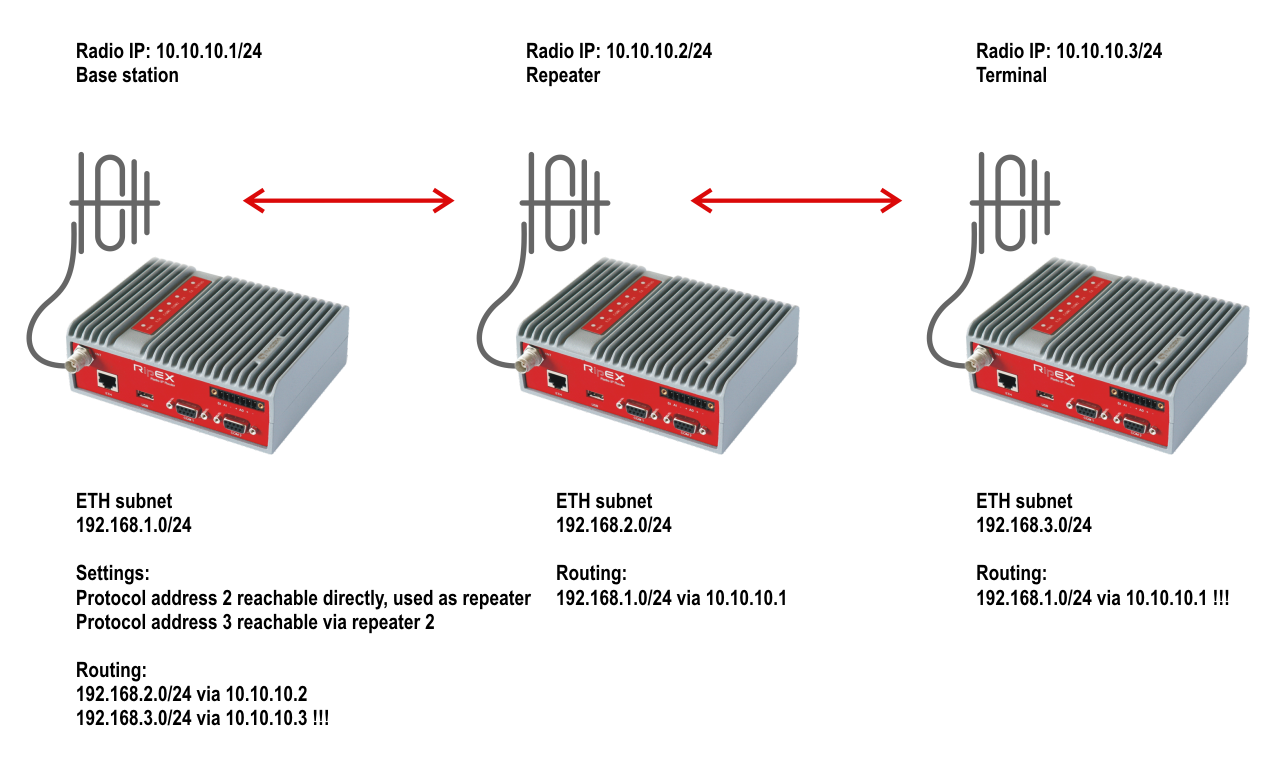Both radio modem’s network interfaces must be used for routing. Radio modem routing works the same as standard IP routing – for more information refer to http://www.comptechdoc.org/independent/networking/guide/netguide.pdf chapter Network Routing.
Limitations:
If you can set the IP address, network mask, gateway and routing table in the IP device connected to RipEX
There are no limitations to setting up routing in this case. The only rule is that the range of radio and Ethernet IP addresses must not overlap.If you can only set the IP address, network mask and gateway, not the routing table in the IP device connected to RipEX
In this case destination addresses must not be on the same network (i.e. the destination address must always be outside of the network mask). A destination address is the IP address of one of the devices connected to RipEX’s which mutually communicate over the radio channel.If the connected device allows neither network mask, nor gateway to be set up
Router mode cannot be used at all; use Bridge mode instead.
| Important | |
|---|---|
In both B and C options, the functionality called “ARP Proxy” can be used so even the devices within the same subnet with no routing options, can be interconnected via the RipEX network utilizing the Router mode (Flexible or/and Base driven). |
There is one significant routing difference using the Base driven protocol compared to the Flexible one:
All communication is managed by the Base station
Any routing from the Remote station back to the Base station or to any other Remote station MUST use the Radio IP of the Base station itself – no matter if it is or it is not behind a repeater.
Example: RipEX1 is a base station and communicates with RipEX3 (terminal) over RipEX2 (repeater). RipEX3 configures the route back to the Base station’s ETH subnet not via the Radio IP of RipEX2 (repeater), but via the Radio IP of RipEX1 (base). The communication is managed by the Base station which actually forwards the data over the RipEX2 repeater, but RipEX3 (terminal) does not need to “know” about this. RipEX3 “considers” itself to be in a direct reachability with RipEX1 (Base). See the simple example below:
Otherwise, BDP has the same limitations as the Flexible protocol regarding the Routing options.
